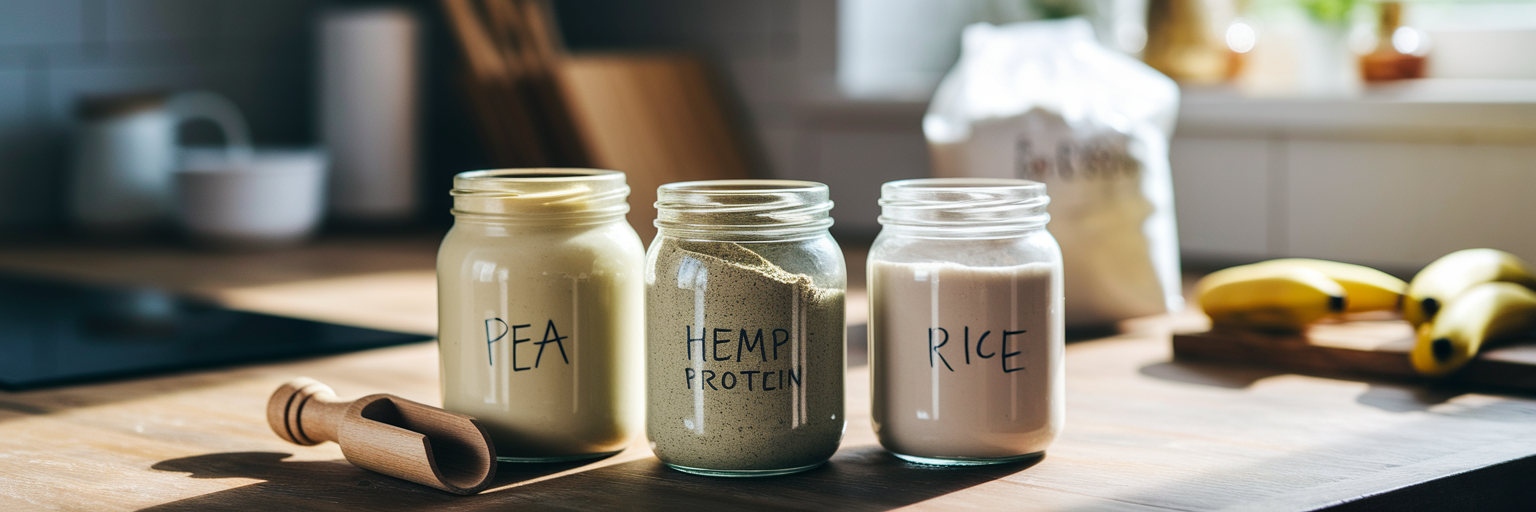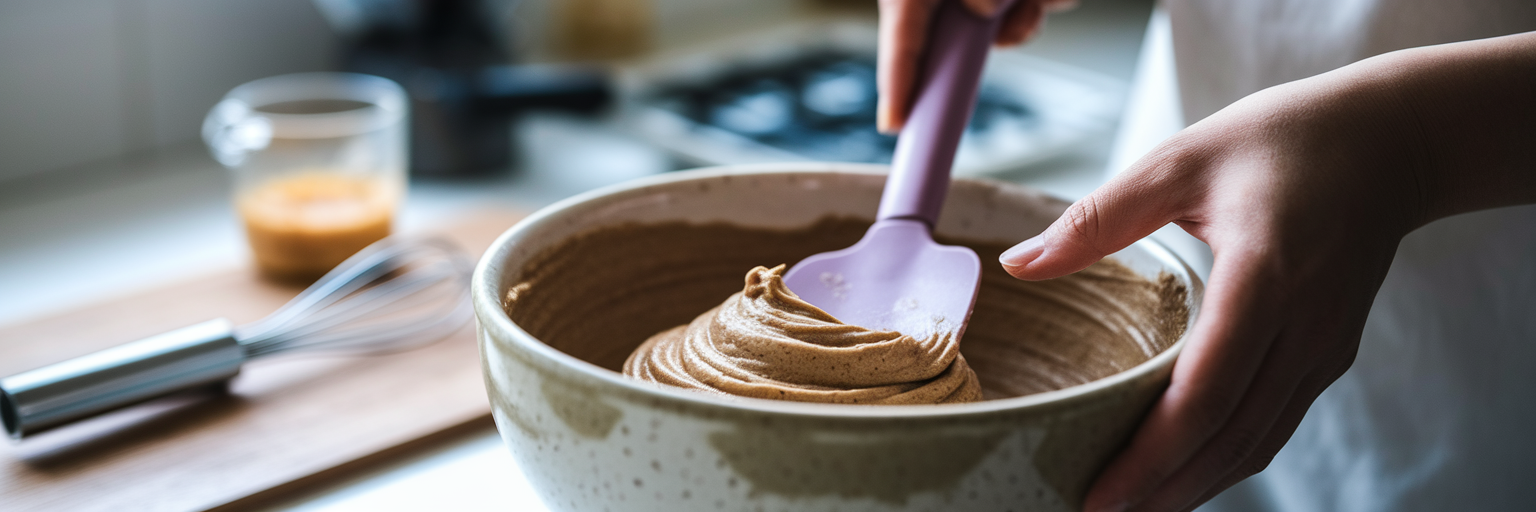Why Add Plant-Based Protein to Your Baking
We've all been there. It's 3 PM, and you're reaching for a cookie, wishing it could be both a delicious treat and something that actually keeps you full. The good news is that the line between a satisfying snack and a nutritious bite is getting wonderfully blurry. Adding vegan protein powder to your home baking isn't about sacrifice. It's a smart enhancement for anyone interested in clean nutrition without giving up their favorite indulgences.
Think of it as a simple upgrade. By incorporating a scoop into your muffins or brownies, you're adding benefits that go far beyond just taste. You get increased satiety, which helps you feel full and satisfied for longer. For those with an active lifestyle, it’s an effortless way to support muscle maintenance and recovery. It’s also one of the easiest ways to boost your daily protein intake, moving beyond the usual shakes and smoothies.
Now, let's address the big question: what about the texture? Many home bakers worry about creating a dry, chalky brick instead of a moist, tender treat. We hear you. But modern plant-based powders have come a long way, and with a few simple techniques, you can achieve delicious results every time. This shift toward incorporating more functional ingredients is part of a larger wellness trend, and you can explore more of these ideas on our health and wellness blog.
Choosing Your Ideal Vegan Protein Powder

Not all protein powders are created equal, especially when it comes to the heat of an oven. The type you choose will directly influence the texture and flavor of your final product. Think of this as picking the right kind of flour for a specific bread; the ingredients matter. To find the best vegan protein for baking, you need to know your options.
Pea protein is a fantastic all-rounder. It has a mild, slightly earthy flavor that disappears into most recipes, making it perfect for beginners dipping their toes into protein baking. Soy protein isolate is another excellent choice because it provides structure and helps with rising, making it ideal for pancakes or quick breads. For lighter baked goods like cookies, rice and hemp proteins are good options, though they can have more distinct flavors. For a deeper look into these ingredients, check out our guide to different protein types.
Our strongest recommendation? Always choose unflavored or naturally sweetened powders. This gives you complete control over the final taste of your recipe, so your banana bread tastes like banana, not vanilla chalk. When reading labels, look for a short list of recognizable ingredients. Many high-quality blends now combine pea, rice, and other plant sources to create a smooth texture and a complete amino acid profile.
| Protein Type | Best For | Flavor Profile | Baking Tip |
|---|---|---|---|
| Pea Protein | Muffins, Cookies, Breads | Mild, slightly earthy | A great all-rounder for most recipes. |
| Soy Protein Isolate | Pancakes, Quick Breads | Neutral | Provides good structure and lift. |
| Rice Protein | Cookies, Crisps | Slightly sweet, light | Can have a slightly gritty texture if not well-blended. |
| Hemp Protein | Dense Breads, Brownies | Earthy, nutty | Best used in recipes with strong flavors like chocolate or spices. |
| Blends (Pea, Rice, etc.) | Most Baked Goods | Balanced and neutral | Often designed for a complete amino acid profile and smooth texture. |
This table helps bakers select a protein powder based on the specific texture and flavor profile they want to achieve in their recipe.
Mastering the Flour and Protein Swap
This is where the magic happens. Successfully how to bake with protein powder comes down to understanding one core principle: protein powder is not flour. While it looks similar, it behaves very differently in a recipe. Flour provides gluten and starch, which create the structure and chewiness we love in baked goods. Protein powder is highly absorbent and lacks that structural quality.
Here’s the golden rule: never replace 100% of the flour with protein powder. Doing so will almost certainly result in a dense, dry outcome. A great starting point for substituting flour with protein powder is to replace about 25% to 33% of the total flour amount. For example, if a recipe calls for one cup of flour, start by using ¾ cup of flour and ¼ cup of protein powder. As noted by home bakers in communities like Reddit, this ratio is a well-tested starting point for many recipes. A recent thread on the platform highlighted that many have found success with similar substitutions.
Because protein powder acts like a sponge, you must compensate with extra moisture. This is non-negotiable for a tender crumb. Here are a few essential protein powder baking tips:
- Increase Wet Ingredients: For every ¼ cup of protein powder you add, include an extra ¼ cup of liquid, like plant-based milk, water, or even coffee for chocolate recipes.
- Add a Moisture-Rich Binder: Ingredients like unsweetened applesauce, mashed banana, pumpkin purée, or vegan yogurt are your best friends. They add moisture and help bind everything together.
- Don't Forget Fat: Healthy fats from nut butter, coconut oil, or avocado also contribute to a moist, satisfying texture.
One final pro-tip: protein-fortified goods tend to brown faster. To prevent them from drying out, consider lowering your oven temperature by about 25°F (around 15°C) and checking for doneness a few minutes earlier than the recipe suggests.
Solving Common Protein Baking Problems

Even with the best intentions, your first few attempts might not be perfect. That’s completely normal. Instead of getting discouraged, think of it as a fun science experiment. Here’s a quick troubleshooting guide for the most common issues.
Problem: My Baked Goods Are Dry or Crumbly
This is the most frequent complaint, and the solution is simple: you need more moisture. Protein powder is thirsty. Next time, try adding a bit more plant milk, a few tablespoons of applesauce, or a scoop of mashed banana to your batter. These ingredients will give your bake the hydration it needs to stay tender.
Problem: The Texture is Dense or Rubbery
A dense, rubbery texture is often a sign of over-mixing. When you mix batter, you develop gluten. When protein powder is in the mix, it can get tough if overworked. Mix your wet and dry ingredients only until they are just combined. A few lumps are okay. Also, ensure your leavening agents, like baking powder and baking soda, are fresh. They provide the lift needed to create a lighter texture.
Problem: There's a Chalky or Earthy Aftertaste
If you’re noticing an unpleasant aftertaste, the culprit is likely the powder itself. First, ensure you are using a high-quality, neutral-tasting powder from a collection of well-formulated clean products. Second, use strong, delicious flavors to mask any subtle earthy notes. Vanilla extract, cinnamon, nutmeg, rich cocoa powder, or citrus zest are excellent at creating a balanced and tasty final product.
Simple Protein-Boosted Baking Ideas
Ready to get started? The best way to learn is by adapting recipes you already love. You don't need to search for complex vegan protein powder recipes to begin. Instead, use the principles we've discussed to give your favorites a nutritious boost. Here are a few simple ideas to inspire you:
- Protein Muffins: For a standard 12-muffin recipe, swap out ¼ cup of the flour for protein powder. Add ¼ cup of unsweetened applesauce or mashed banana for extra moisture and natural sweetness.
- Pancakes or Waffles: Simply add one scoop of protein powder to your favorite pancake batter. You will likely need to thin the batter with an extra splash or two of plant-based milk to get the right consistency. Soy protein works especially well here for a fluffy texture.
- Chocolate Chip Cookies: Cookies made with a base of nut butter are incredibly forgiving. The high fat and moisture content balances the dryness of the protein powder perfectly. Try substituting ⅓ of the flour and see how you like the chewy, satisfying result.
- Banana or Zucchini Bread: These quick breads are ideal for protein experiments because they are already so moist. Start by replacing ¼ of the flour with protein powder and bake as usual. You might not even need to add extra liquid.
These simple adjustments make it easy to add more protein to your diet without a fuss. For more inspiration, you can try one of the easy vegan protein recipes on our blog that we know you'll actually crave.
Embracing Your Clean Baking Journey
Baking with vegan protein powder is a creative process, not a rigid science. Remember the core guidelines: choose a quality powder you enjoy, start with a small flour substitution, and always add a little extra moisture. These are friendly suggestions to guide you, not strict rules that can't be broken.
Don't be afraid to experiment. A few imperfect batches are part of the fun and will teach you what works best in your kitchen. With so many clean, organic, and delicious vegan proteins on the market, it has never been easier to create treats that are both wholesome and delicious.
So, what delicious, protein-packed treat will you bake first? We’d love to see your creations. Share them with us on social media and let’s inspire each other!



